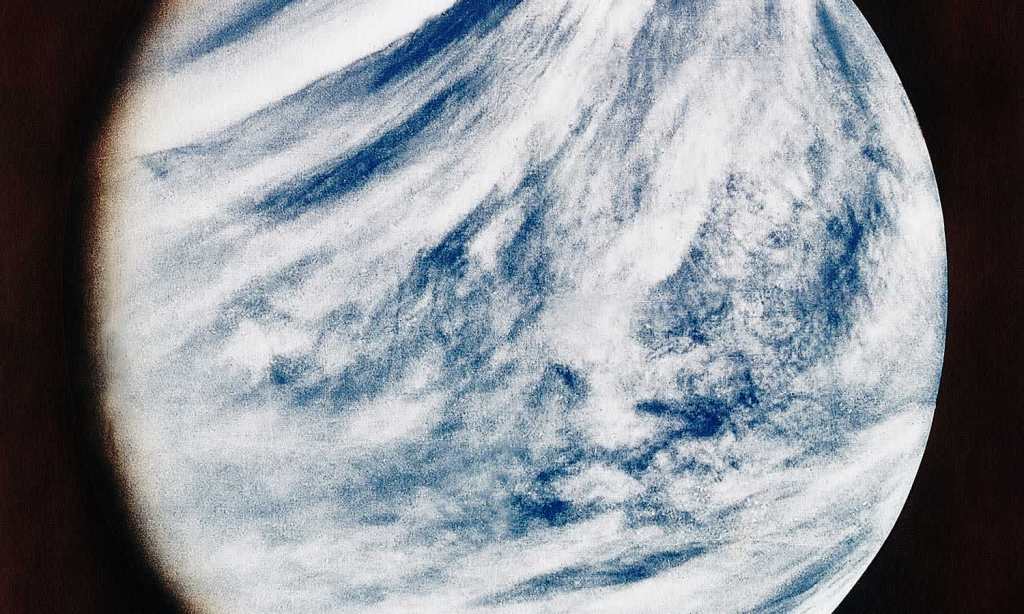NASA has recently announced plans to launch two new scientific missions to the planet Venus between 2028 and 2030 for the first time in more than 30 years.
The US space agency has said that it plans to study the atmosphere and geological history of our planet’s closest neighbour. Each of the two missions has been granted over US $500 million a piece for the projects.
The question is, why now? And what does NASA hope to learn about the second planet from the sun?
DAVINCI+ and VERITAS
The missions have been dubbed DAVINCI+ and VERITAS using the ‘cool acronym’ system that every big government mission apparently has to have. DAVINCI+ stands for Deep Atmosphere Venus Investigation of Noble Gases, Chemistry, and Imaging (so it should really be called DAVINGCI) while VERITAS – the Latin word for ‘truth’ – stands for Venus Emissivity, Radio Science, InSAR, Topography, and Spectroscopy.
“These two sister missions both aim to understand how Venus became an inferno-like world capable of melting lead at the surface,” said NASA administrator, Bill Nelson.
JUST IN: @NASA has selected DAVINCI+ and VERITAS as the next two @NASASolarSystem Discovery missions.
Who is ready to explore Venus?https://t.co/Yofbg1tDot pic.twitter.com/r9nFp5PYlM
— Thomas Zurbuchen (@Dr_ThomasZ) June 2, 2021
The DAVINCI+ mission is designed to measure the composition of the dense Venusian atmosphere and get a better understanding of how it evolved. It will also send back to Earth the first-ever high-resolution images of special geological features on Venus called ‘tesserae’. These shapes are thought to be similar to Earth’s continents, the suggestion being that Venus also has plate tectonics.
VERITAS plans to map the surface of the planet to determine more about its geological history and why it evolved so differently to Earth.

How much do we already know about Venus?
Well, according to Tom Wagner, NASA’s Discovery Program scientist, astoundingly little.
Venus is the closest planet in the solar system to Earth. It’s named after the Roman goddess of love and beauty and is the second brightest natural object in the sky after the moon. That means Venus is pretty easy to spot with a telescope and can sometimes even been seen by the naked eye.
It’s sometimes called Earth’s “sister planet” since it’s only a little bit smaller than our planet and relatively close when the orbit lines up. At its closest point, Venus can be nearly 38 million kilometres away. For context, Mars, which NASA has sent many recent missions to, can be as close as 54 million kilometres.
Just because it’s close, however, does not mean you’d want to visit it. Venus has the densest atmosphere of the four terrestrial planets in our solar system, made up of more than 96% carbon dioxide, and it periodically rains sulfuric acid.
The pressure on the planet is also very high and would be equivalent to being nearly a kilometre underwater on Earth.
It also has the hottest surface temperature of any planet in the solar system, despite being the second closest. The average temperature on the planet is about 464°C, so not exactly jumper weather.
There is suggestion that Venus may have had oceans at one point in time but these have more than likely been evaporated by the sun.
So… why do we want to go there?
“The combined results of these missions will tell us about the planet from the clouds in its sky through the volcanoes on its surface all the way down to its very core,” said Wagner.
“It will be as if we have rediscovered the planet.”
Last year, Venus made headlines here on Earth after researchers at the James Clerk Maxwell Telescope in Hawaii discovered a gas called phosphine in the harshly acidic clouds in Venus’s atmosphere.
On Earth, phosphine is made by microbes that thrive without oxygen, or by industrial processes.
Jessica Dempsey, the deputy director of the telescope, explained that “you will find it over swamps and things that are decomposing, and also anaerobic life like microbes that are sucked up into the air and into our clouds.”
We’ve also discovered phosphine in the atmospheres of Jupiter and Saturn, but there it is made by chemical processes that aren’t possible on Earth or Venus.
Although the discovery does not mean there definitely is life on Venus, NASA is thought to be prioritising the planet to find out more about the origins of this gas.
Will we discover life up there? Possibly. But we’ll have to wait almost another decade to find out for sure.
Read more stories from The Latch and subscribe to our email newsletter.


